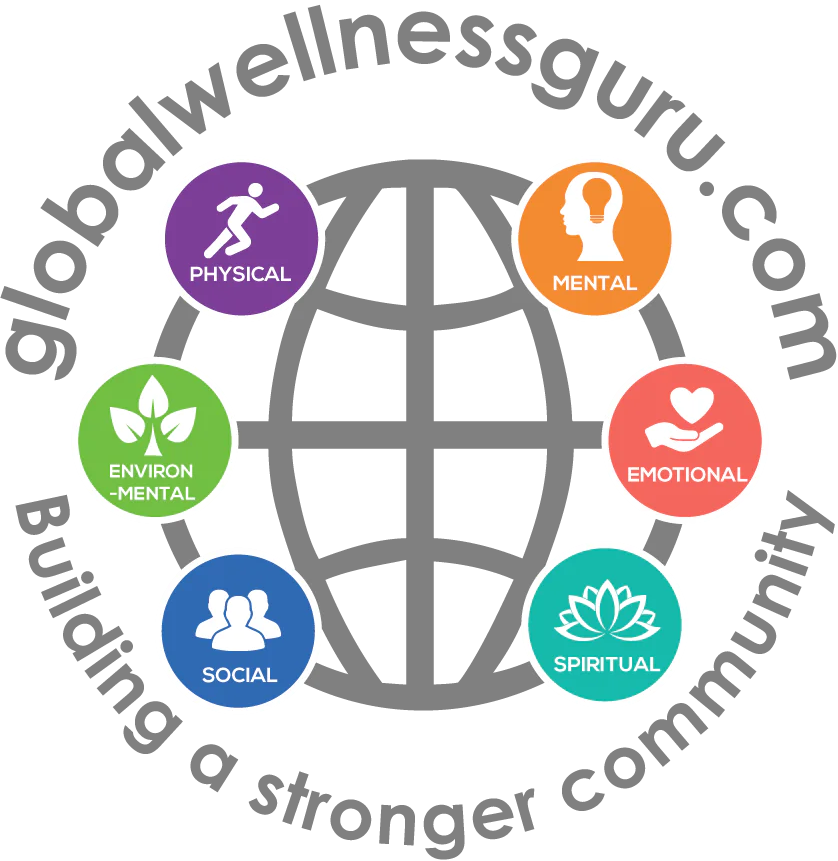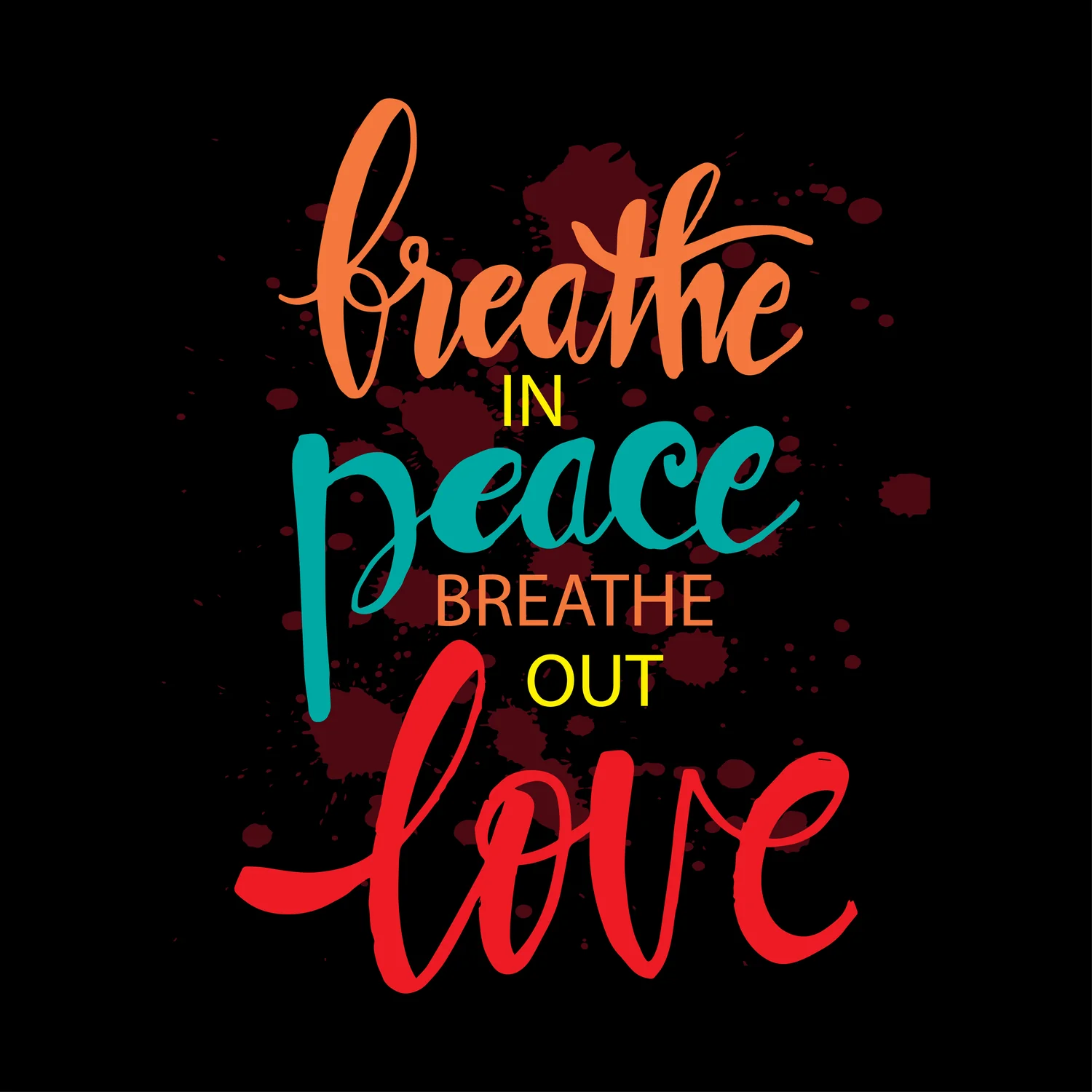Breathwork and Its Role in Spiritual Awakening Stress Management
Breathwork involves conscious, connected breathing exercises that Stress Management can induce altered states of consciousness and provide a gateway to spiritual awakening.
As science continues to reveal the profound effects of breathwork on the mind and body, its role in personal transformation and awakening grows clearer.
This ancient practice is resurging as more people discover its power to unlock states of inner peace, mystical visions, and self-realization.

Peace and Love are within you and spread them until your last breath is a True Spirituality.
A Brief History of Breathwork
The use of breath-centered practices for spiritual purposes dates back over 5,000 years to prehistoric shamanic traditions. However, the structured, therapeutic application of conscious breathing is often traced to Yogic Pranayama techniques that emerged in India around 500 BCE.
These controlled breathing exercises were intended to accumulate and direct “prana” or vital life force energy throughout the body for improved well-being and transcendent states [1].
Pranayama and similar breath-focused traditions also arose independently in ancient China through practices like Qigong and Taoist breathing exercises.
In these traditions, breathwork helped align oneself with the natural rhythm and flow of Qi or “universal energy.” This energizing effect of mindful breathing was believed to unlock latent human potential and capacities.
The mystic schools of Judaism and early Christian sects also recognized breathwork disciplines, as did many indigenous cultures from Polynesia to pre-Columbian America. Most shared a common view of breath as a sacred conduit to higher states of being.
The Physiology: How Breathwork Affects the Mind and Body Stress Management
Modern research has begun to demystify breathwork by showing concrete changes it can induce in the physical body and brain. Science now understands that breathing exerts direct, measurable effects on our physiology that can clarify its transformative impact [2].
Oxygen, Breathing Patterns, and Brainwaves
On a basic level, breathwork increases oxygen intake by utilizing full, conscious inhalations and exhalations. This has a cascade effect, starting with oxygen enrichment of the bloodstream. More oxygen energizes the cells, tissues, and organs by fueling metabolism.
At the same time, deeper breathing activates the parasympathetic nervous system by stimulating the vagus nerve. This switches the body into rest-and-digest mode and triggers a relaxation response. Stress hormone levels decrease while calming neurotransmitters like GABA increase.
Slow, even breathing also directly impacts electrical brainwave activity as measured by EEG. Studies show conscious deep breathing can induce a shift toward more alpha and theta brainwave activity characteristic of meditative states. This reflects greater synchronization between the left and right hemispheres of the brain [3].
Hence by altering oxygen levels, breathing patterns, and brainwave states, breathwork taps into an effective toolkit for rapidly inducing meditative consciousness and its accompanying insights.
Psycho-Energetic Effects
Beyond supplying oxygen, many cultures understood breath as transmitting a subtle life energy that in Western terms might equate to “prana” or “qi.” Mainstream science has not confirmed the existence of this energy yet empirical evidence Does suggest breathwork can generate tangible effects resembling the flow of vital energy.
Studies indicate deep conscious breathing leads to both subjective sensations and objectively measurable changes consistent with the concept of increased energy or prana [4]. Across cultures, practitioners report feelings of streaming sensations, energetic buoyancy, and tingling warmth from breathwork.
Scientific measurements reveal boosted electrical conductivity across acupuncture meridians as well as increased biophoton emissions during and after conscious breathing sessions.
While not proving a mystical “energy,” this empirical evidence validates the lived experience among many practitioners of breath’s capacity to induce vibrant, animating sensations [4].
The psycho-energetic impact of breathwork likely stems from biochemical effects and nervous system interactions. However, the subjective sense of vitality it imparts speaks to breath’s exceptional role as a tool for psycho-spiritual awakening.
Common Types of Breathwork
Many structured breathing practices exist that leverage conscious breath regulation to alter consciousness. While techniques vary, several exemplify core types of breathwork used for personal growth and awakening.[5]
Rhythmic, Controlled Breathing
- Pranayama – As noted above, yogic pranayama consists of controlled breathing patterns often focused on extending the inhale, exhale, and gaps between them. Specific ratios like 4-7-8 breathing are common.
- Coherent breathing – This term refers to breathing at a resonant frequency of around 5 breaths per minute using equal inhalation/exhalation lengths. It maximizes heart rate variability.
- Breath counting – Simple counting of breaths anchors awareness. Common patterns involve counting each cycle up to 10 and then starting over.
A key effect of controlled, rhythmic breathing is concentration – it holds a meditative focus on the breath. Slow, measured respiration also activates the parasympathetic system for relaxation.
Connective Breathing
Connective breathing weaves together body, breath, and awareness into a harmonizing flow. Examples include[6]:
- Ocean breath – Smooth, unforced breathing through the nose visualizing the rhythmic lapping of ocean waves.
- Ujjayi – A soft aspirant breath common in yoga, as if fogging a mirror. It stimulates vagus nerve activity.
- Circular breathing – Flowing the breath continuously in a loop with no pauses between inhales and exhales.
These practices use mental imagery, vocal resonance, and body sensing to achieve a deeply connected, absorbed state between the breath, body, and mind. The integrative effect can lead to blissful states of embodiment.
Transformative Breathing
Other breathwork forms use stronger, exertive breathing to powerfully recalibrate the nervous system and alter consciousness:
- Holotropic breathing – Accelerated, intensified breathing sessions pioneered by Stanislav Grof. Often used with evocative music and bodywork.
- Breath of fire – Forceful breathing through the nose at one breath per second, derived from yogic traditions.
- Rebirthing breathwork – Combined connective breathing and emotional processing popularized in the 1970s human potential movement.
- Wim Hof method – Short-term hyperventilation and breath retention developed by Hof to withstand extreme cold.
- Shamanic breathing – Various intense and arrhythmic breathing techniques used by indigenous cultures to induce trance states.
The strong respiratory drive of these methods acts almost like a psychedelic in stimulating temporary changes in brain chemistry and energy levels. This can prompt radical shifts in consciousness and healing crises.
Nadi Shodhana Pranayama or Alternate Nostril Breathing.
Breathwork Mechanisms for Awakening Experiences
Breathwork provides a powerful route to altered states and awakening because it taps into multiple interconnected mechanisms affecting body, mind, and spirit[7]:
Hyperventilation and Alkalosis
Deep, rapid breathing practices significantly lower blood CO2 levels while raising O2. This respiratory alkalosis shifts the brain’s acid/base balance. Studies confirm this can mimic some effects of psychedelics by disinhibiting brain activity and altering excitability.
The transport of tryptamines like DMT may also increase since alkalosis promotes their transition across the blood-brain barrier.
Neural Synchronization and Changes
As noted, breathwork drives brain waves into more synchronized alpha-theta frequencies linked with open, meditative states. Resonance and phase-locking between brain regions associated with higher consciousness increase. Neuroplastic adaptations also ensue. Wim Hof breathing, for example, rapidly forms new neural connections[8].
Parasympathetic Activation
Slow, controlled breathing stimulates the vagus nerve and switches on the parasympathetic nervous system. This prompts relaxation while releasing acetylcholine, GABA, endorphins, and other neurotransmitters that underpin meditative bliss, mental calmness, and body-mind integration.
Immune and Inflammatory Effects
Deep breathing practices reduce circulating pro-inflammatory cytokines while boosting natural killer cell activity. This anti-inflammatory effect reinforces stress reduction and counteracts anxiety and depression. Anti-aging benefits manifest at the cellular level.
Body-Mind Reintegration
Breathwork integrates the physical, emotional, mental, and spiritual domains that become fragmented through life stresses. As breathing realigns the nervous system, memories, feelings, and thoughts can rise and integrate in a holistic way. This “unblockage” releases stuck energies and reconnects us to health and inner wisdom.
Induction of Flow States
The mastery of consciousness achieved in many breathwork practices serves as training wheels for entering flow states. Loss of self-consciousness, time distortion, and absorption into the creative moment become effortlessly accessible. A reservoir of freedom from fixed ego patterns develops.
Non-Dual Awareness
As thinking relaxes, breathwork nudges awareness into direct perception beyond conceptual overlay. Practitioners tap into expansive witnessing presence rather than narrow identity. The possibilities of the moment fill reality once limiting beliefs dissolve. Suffering yields to equanimity in the eternal Here and Now.
Entrainment to Rhythm Cosmic Rhythms
Entraining breathing to a resonance harmony with synchronous universal vibrations connects our individual life force with the intelligence of nature and non-local consciousness. Breath aligns us to the hidden heartbeat of life.
While the level of awakening varies with the individual and practice approach, breathwork systemically “paves the path” by activating all these interdependent mechanisms. Combined, they unlock elevated, mystical, and cosmic states of being[9].
The Dark Side of Breathwork
Despite its enormous potential for transpersonal experiences, breathwork carries risks that warrant caution[10]:
- Hyperventilation – While often part of the process, excessive hyperventilation can cause dizziness, numbness or tingling, muscle cramps, tetany, and loss of consciousness if taken too far, or too fast. Guidance is recommended.
- Repressed emotions – Breathwork lowers psychological defenses. Deeply buried feelings often surface which may overwhelm some people. Emotional support is ideal for transformational breathing sessions.
- Psychosis or seizures – Those with serious mental health conditions and seizure disorders could possibly face adverse effects from intense breathing practices. Checking with health professionals is advised in such cases. More research is still needed on these risks.
- Adverse effects – Some temporary negative effects like anxiety, insomnia, or depression may manifest as part of an intense breathwork cleansing or transformational process. Consulting an experienced guide helps navigate challenges. Additional support like counseling or grounding practices may assist integration.
- Misuse – Though rare, charismatic leaders with inadequate training could potentially misuse breathwork methods manipulatively since they access suggestible states of consciousness. Seeking ethical, authentic guidance is prudent.
- Addiction – The bliss, visions, and mystical states breathing induces can become psychologically addictive for some. Moderation and integration practices help ensure balance.
With proper precautions, preparation, and guidance, the profound gifts of breathwork for awakening consciousness far outweigh the comparatively rare adverse outcomes. Given breath’s availability to every human, conscious breathing practices retain universal relevance for healing and self-realization.
Breathwork Practices Across Traditions
Despite arising independently, breath-centered disciplines share many similarities cross-culturally. The following wisdom traditions fuse breath regulation with meditation, postures, ethics, devotion, or other practices to embroider breathwork’s role in their philosophies of spiritual liberation.[11]
Yoga and Pranayama
As noted earlier, Yoga originated around 500 BCE in India. Pranayama breathing exercises figure centrally for purifying the nadis or subtle energy channels. Sustained conscious breathing increases prana while unblocking and balancing its flow.
This vital energy cleanses neurological and psychic impurities to pave the way for higher states of awareness. The interweaving of asana postures, bandhas, mudras, and meditation makes hatha yoga a holistic psycho-physiological system.
Buddhism and Anapanasati
Buddhist Anapanasati breathing meditation flourished over 2,500 years ago. Practitioners focus on the nuances of sensation caused by inhaling and exhaling.
This builds concentration and turns attention inward to embrace experiential and sensory reality over conceptual narrative. Conscious breathing leads to insight into impermanence and the empty, interconnected essence of existence. Non-dual presence flowers through meditating on the breath.
Taoism and Qigong
In China around 500 BCE, Taoists developed “Qigong” breathing exercises centered on circulating and cultivating the body’s vital Qi energy. Specific breathing patterns, sounds, movement, and meditation direct and absorb qi to acquire greater vitality and longevity.
The microcosmic-macrocosmic link between breath, qi, and the universe forms a bridge to Taoist principles of naturalness, spontaneity, and non-action.
Sufism and the Dhikr
Within esoteric Islam, Sufi orders have refined meditative breathing practices called dhikr. These use repeated devotional phrases or divine names synchronized with the breath. Dhikr invokes inner absorption and mystical annihilation of the self.
The altered states open direct experience of the divine rather than conceptual knowledge. In Sufism, conscious breathing bridges finite existence and Infinite Being.
Shamanism and Holotropic Trance
Shamanic techniques for healing and divination incorporate forceful breathing to precipitate trance states. Hyperventilation, panting, and circular breathing activates non-ordinary realities where the shaman communes with spirits, ancestors, plant teachers, and inner allies. Shamans enter transcendental visionary realms through the gateway of breath.
This spectrum illustrates breathwork’s common role as a tool for transcendence available in diverse cultures. While practices differ, they converge in using conscious breath regulation to access transpersonal and mystical domains of being.
Integrating Breathwork Experiences
With its deep impact on consciousness, integrating breathwork experiences is vital for avoiding undue challenges. Integration entails:
- Staying well-hydrated and nourished to ease physiological transitions
- Allowing time for rest and reflection on insights gained
- Adjusting worldviews gradually to assimilate breakthrough experiences
- Journaling, art, or discussing experiences with sympathetic listeners
- Grounding through nature contact, exercise, bodywork, and community
- Mindfully managing any difficult emotions or sensations that arise
- Applying breakthroughs by living aligned with awakened insight
- Cultivating daily meditation, presence, and gratitude practices
- Trusting intuition and synchronicities that emerge post-breathwork
Ongoing integration practices help anchor awakened states into day-to-day living. Each breathwork journey contributes to the soul’s unfolding.

Calmness and spirituality are deeply interconnected, often complementing and enhancing each other in various ways.
The Future of Breathwork
Supported by a growing evidence base, breathwork, and its spiritual promise are reemerging in contemporary forms such as ecstatic dance, soma breathwork, and the Wim Hof Method. Apps make certain guided practices more accessible.
As mystical breathing continues spreading globally, scientific answers lag behind the experiential understanding of breathwork’s power. But research is accelerating.
Mapping the holistic dynamics of techniques like tummo, transformational breath, and holotropic-style sessions may someday unpack the biomechanics of awakening. Functional MRI scans of meditators’ brains already link conscious breathing to expanded awareness states.
Quantifying the benefits of ancient breathing methods could spur innovations blending inner science with technology – such as biofeedback-enhanced breathwork. Though interpersonal guidance remains ideal for advanced breath practices, democratized digital access may spread these consciousness-enhancing skills worldwide.
While much remains unknown regarding breathwork, the centrality of breath and energy across wisdom traditions affirms they unveil portals to the miraculous. The inner technology of our own breath awaits exploration[12][13].
Breathwork as an Evolutionary Path
Our connection to breath forms a continuous, unbroken link back to the origins of life. The symphony between breath and being has sustained the human family for eons. When consciously aligned through practices old and new, our breath becomes an evolutionary catalyst.
Today’s planetary convergence of crises calls for the inner stabilization, insight, and solidarity breathwork sows. Transforming the collective future requires transformational breather workers to midwife a new consciousness. With each conscious breath, we birth the vital presence our ancestors prayed for. May the path of breath guide humanity into the promise of unity.
Sources
[1] Fincham, Guy William et al. “Effect of breathwork on stress and mental health: A meta-analysis of randomised-controlled trials.” Scientific reports vol. 13,1 432. 9 Jan. 2023, doi:10.1038/s41598-022-27247-y
[2] Balban, Melis Yilmaz et al. “Brief structured respiration practices enhance mood and reduce physiological arousal.” Cell reports. Medicine vol. 4,1 (2023): 100895.
doi:10.1016/j.xcrm.2022.100895
[3] Boyadzhieva, Asena, and Ezgi Kayhan. “Keeping the Breath in Mind: Respiration, Neural Oscillations, and the Free Energy Principle.” Frontiers in neuroscience vol. 15 647579. 29 Jun. 2021, doi:10.3389/fnins.2021.647579
[4] Chen, Ying et al. “The effects of life review on psycho-spiritual well-being among patients with life-threatening illness: a systematic review and meta-analysis.” Journal of advanced nursing vol. 73,7 (2017): 1539-1554. doi:10.1111/jan.13208
[5] Banushi, Blerida et al. “Breathwork Interventions for Adults with Clinically Diagnosed Anxiety Disorders: A Scoping Review.” Brain sciences vol. 13,2 256. 2 Feb. 2023, doi:10.3390/brainsci13020256
[6] Pratscher, Steven D et al. “Conscious connected breathing with breath retention intervention in adults with chronic low back pain: protocol for a randomized controlled pilot study.” Pilot and feasibility studies vol. 9,1 15. 24 Jan. 2023, doi:10.1186/s40814-023-01247-9
[7] Balban, Melis Yilmaz et al. “Brief structured respiration practices enhance mood and reduce physiological arousal.” Cell reports. Medicine vol. 4,1 (2023): 100895.
doi:10.1016/j.xcrm.2022.100895
[8] Lowet, Eric et al. “Tuning Neural Synchronization: The Role of Variable Oscillation Frequencies in Neural Circuits.” Frontiers in systems neuroscience vol. 16 908665. 8 Jul. 2022, doi:10.3389/fnsys.2022.908665
[9] Aschoff, J. “Human circadian rhythms in activity, body temperature and other functions.” Life sciences and space research vol. 5 (1967): 159-73.
[10] Yoshida, Takeshi. “The Dark Side of Spontaneous Breathing during Noninvasive Ventilation. From Hypothesis to Theory.” American journal of respiratory and critical care medicine vol. 202,4 (2020): 482-484. doi:10.1164/rccm.202005-1612ED
[11] NETA. “National Exercise Trainers Association.” NETA,
www.netafit.org/wp-content/uploads/9232-preview.pdf
[12] Fincham, G.W., Strauss, C., Montero-Marin, J., et al. “Effect of Breathwork on Stress and Mental Health: A Meta-Analysis of Randomised-Controlled Trials.” Scientific Reports, vol. 13, 2023, article 432, https://doi.org/10.1038/s41598-022-27247-y.
[13] Zaccaro, Andrea et al. “How Breath-Control Can Change Your Life: A Systematic Review on Psycho-Physiological Correlates of Slow Breathing.” Frontiers in human neuroscience vol. 12 353. 7 Sep. 2018, doi:10.3389/fnhum.2018.00353







